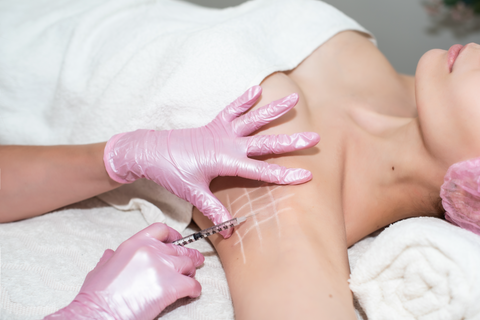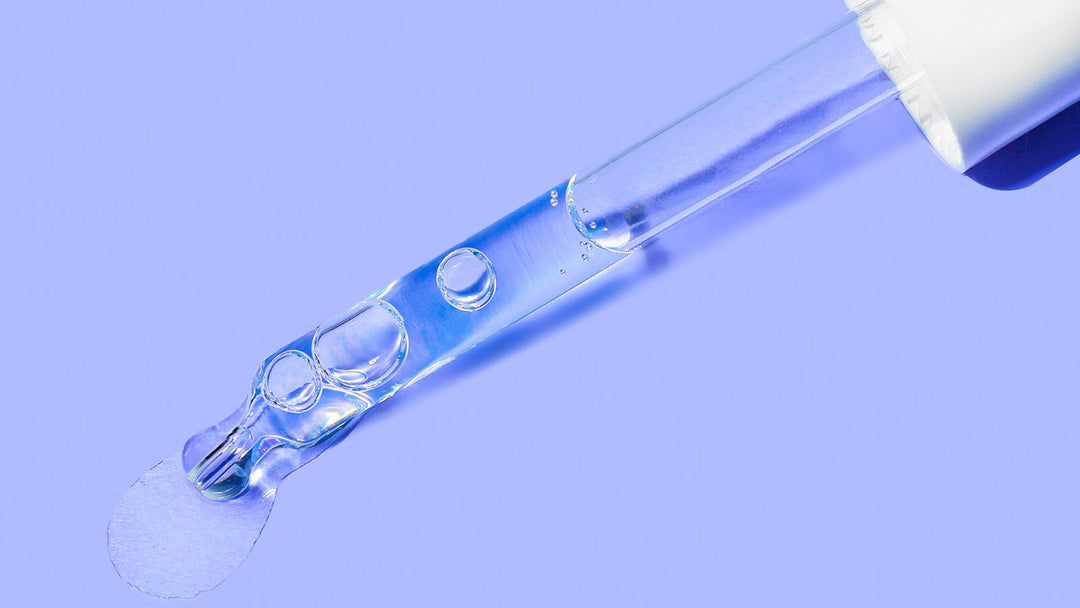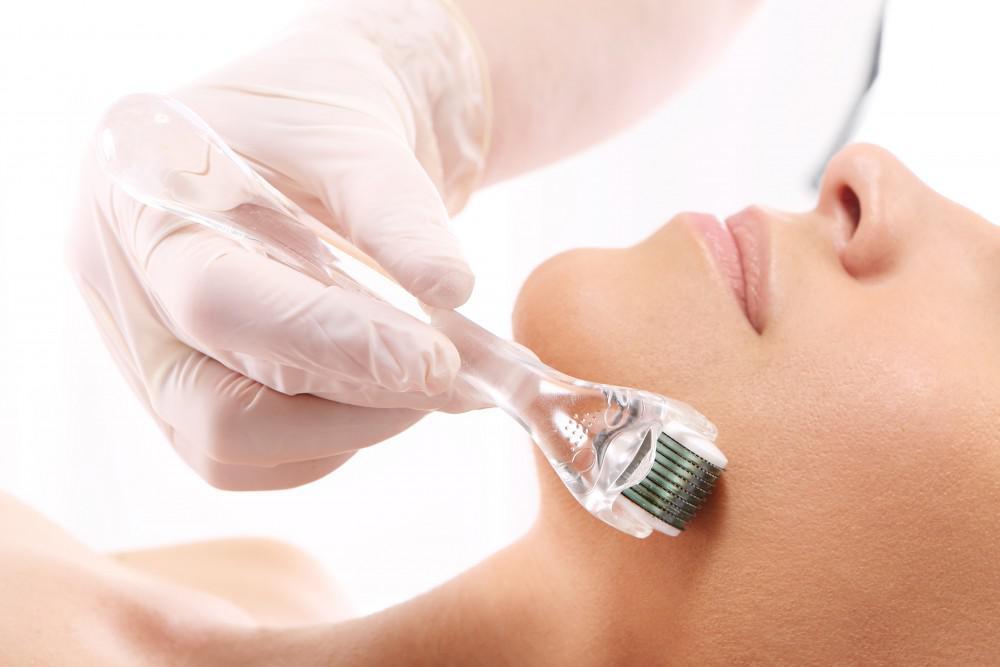What Is Botox? - Debunking the Most Common Myths
Unless you haven't watched TV or looked at your phone in the last decade, you probably know that Botox is officially everywhere. And on top of that, it seems everyone you know has gotten it or plans to get it. And if you’re still hesitant whether you should do it too and need answers to your questions, you’re in the right place. Because even though Botox is extremely popular, there's still confusion about its basics.
Neuromodulators such as Botox are popular anti-aging injectables and they have been used for decades now due to their great effects. Just take a quick look at a patient’s Before and After photos of using Botox and you will realize why Botox has made such a revolution in the cosmetics industry.
If you no longer want to see your crow’s feet or the “11s” between your brows, you might be wondering if it’s the right time to try Botox yourself. Let’s learn more about this miraculous injectable and see whether it’s the right choice for you.

What Is Botox?
Botox is an injectable neuromodulator that temporarily stops the nerve signals to the muscles where it has been injected. Botox is used to address wrinkles caused by frequently repeated muscle movements such as frowning, smiling, squinting, and even chewing. Botox prevents muscle movement, thus relaxes wrinkles and smoothens them over time.
What Is Botox Made of?
Botox is made from a toxin produced by the bacterium Clostridium botulinum. Each vial of Botox contains Clostridium botulinum type A neurotoxin complex, Albumin (Human), and sodium chloride. All these ingredients are in a sterile, vacuum-dried form without any preservatives added.
How Long Does It Take for Botox to Work?
After applying Botox, maximum results can be seen after a week. However, this can be different for each person as there are certain factors to consider to determine how long it will take for Botox to work. These include your age, gender, muscle mass, the type and volume of Botox used, your skin’s elasticity and your physical activity after the treatment.
Is Botox Safe?
Generally, Botox is considered safe to be used. Nevertheless, if you’re considering getting it, make sure to go to a board certified dermatologist or plastic surgeon. If your injections are not prepared and applied the right way according to FDA standards, you’re more likely to experience some side effects.
How Long Does Botox Last?
Usually, the results you get from Botox last 3-6 months. However, there are some things you can do to enjoy the results from Botox longer. For an optimal and long-lasting effect, after getting Botox, avoid sun exposure, reduce your stress levels, consider low-intensity workouts, do not smoke, moisturize your skin often and take zinc supplements.
Where to Get Botox?
The Rejuva Aesthetics and Wellness Center is the ideal spot to get Botox injections. We offer many name brand injectables such as Botox, Juvederm, Voluma, Restylane, Radiesse, Belotero, kybella, Sculptra. The center uses only superb quality products, and their team of professionals will make sure that you are satisfied with your results.

How Often Can You Get Botox?
Most people have Botox injections every 4 months. However, since each body responds differently, you might need Botox more or less frequently. The factors that determine how long your results will last include: the face area that’s being treated, the depth of your wrinkles, how expressive you are with your facial muscles as well as the dosage for your treatment.
What Not to Do After Botox?
Although Botox provides very reliable results, what you do right after you get your injections can reduce its effectiveness. For that reason, it’s essential to avoid the following activities after your Botox appointment.
-
Rubbing your face;
-
Lying on your face;
-
Drinking alcohol;
-
Exercising;
-
Staying in the sun;
- Taking blood thinners.
Can You Drink After Botox?
Drinking alcohol after Botox can prolong your recovery. Alcohol has blood-thinning properties, meaning it provokes more blood flow, which can result in bruising and swelling at the injected area. Plus, alcohol can dry your skin out, which can also impede the healing process and may reduce the effectiveness of the treatment.
Can You Get Botox While Pregnant?
Most dermatologists would not advise getting Botox while pregnant because they’re not sure whether it can potentially harm the baby. There have not been sufficient studies conducted on this topic as most pregnant women do not want to join a study trial that might potentially harm their unborn child.
How Much Is Botox?
The cost of Botox depends on various factors, such as how many units of Botox you want to get, the part of your face you’re treating (as smaller areas cost less), the area where you live, etc. Generally, you should expect to pay between $19-$25 per unit.
How Much Is Botox Per Unit?
Botox is measured in units and typically costs around $19-$25 per unit. For example, to treat the eye and forehead area, on average, a dosage of 30-40 units might be used. This would make the total cost for this Botox application around $300 to $600.
How Many Units of Botox for Forehead?
Generally, the amount of Botox units you'll need for your forehead will depend on the anatomy of your face and your desired results. For example, more units give a more smoothing effect; fewer units provide a subtle softening effect. Botox manufacturers suggest injecting 4 units each in five areas on the forehead, resulting in a total of 20 units.
Does Botox Help Migraines?
Various studies have suggested that Botox can help migraine headaches as it blocks the neurotransmitters that carry pain signals from the brain. Botox can be seen as a block in that pathway – it prevents the chemicals from getting to the nerve endings around your head and neck.
Dysport vs Botox
Dysport is the perfect option for people who are looking to smoothen their moderate to severe frown lines. It usually lasts three to four months. On the other hand, Botox can be used to treat various types of face wrinkles, such as forehead wrinkles, crow’s feet and laugh lines. When properly applied, Botox can last from four to six months.
Which Areas Are Best for Applying Botox?
Neuromodulators can perfectly address and smoothen forehead lines, glabellar lines (the wrinkles between the eyebrows), the bunny lines around the nose, crow’s feet, and the fine lines that appear around the mouth from pursing your lips.
Besides fine lines and wrinkles, Botox can also be used to treat other things. It’s also commonly used for elongating and softening a square jaw and treating a gummy smile. If you have very strong jaw muscles, you can soften them by using neuromodulator injections over time to achieve a softer and more curved jawline.
Many people who sweat excessively can also benefit from applying Botox injections to their body parts that sweat easily. Botox can be applied to the armpits, scalp, palms of hands, or even the soles of the feet. What’s more, Botox is an FDA-approved treatment for migraines and provides relief to people suffering from TMJ (temporomandibular joint dysfunction).
What Does the Procedure of Getting Botox Involve?
When you visit an experienced dermatologist to get a Botox injection, they will clean the skin on the area they will work on andl apply several shots with a fine needle. Most patients can tolerate the minor pain from the shots and don’t want the area to be numbed before the treatment. However, some people choose to get anesthesia first, then Botox. This is why it’s important to get your treatment from a dermatologist - these professionals understand facial anatomy extremely well so they can correctly apply the treatment to get the ideal results you’re after.
The dosage that the dermatologist will use will depend on your preferences as well as on the strength of your muscles. Usually, men have stronger facial muscles than women, and they might need a little bit more of the product to get the desired results and smoothen their fine lines and wrinkles. After the treatment is done, there might be a bit of swelling at the injection spots. However, these are usually very small and resemble an insect bite.
After undergoing a Botox treatment, you can continue with all your normal activities within several hours. Refrain from applying makeup that day – you can apply it the morning after. You can expect slight bruising or redness on the injected site and a headache. These are rare but still possible side effects.
Debunking the Common Myths Around Botox

You Should Get Botox Only After 40
The truth of the matter is, there’s no magic age to get a Botox treatment. Many patients have been hopping on the Botox bandwagon in their 20s and 30s. They do this as a preventative measure even though they may not have many wrinkles or they’re not that deep. This is one of the reasons why most dermatologists can’t really tell what’s the best age to try Botox as it all depends on your facial expressions, your goals and aesthetics preferences.
Every time you raise your eyebrows or bring your eyebrows together, the wrinkles you have in these areas become deeper and more frequent. This process happens slowly and over a longer period of time, which is why you can’t notice it on a daily basis.
However, if you take a look at those horizontal wrinkles on your forehead when your face is relaxed, you will notice how they increase when you do some face expressions, like raising your eyebrows. If you hold your eyebrows lifted in that position, you will see that, once you relax, there are more horizontal wrinkles on your forehead and they look deeper than before. Botox helps prevent this process from happening.
Botox Will Make Your Face Look Frozen
When injected correctly and by an experienced professional, Botox will not make you look frozen. Some people say that Botox will erase your personality from your face and leave you with a very limited range of motion when you smile, laugh, or get upset or angry.
While, yes, a part of your face movement will be restricted, a moderate and just the right amount of Botox will still let you express yourself and react in a lively way. Botox only relaxes the muscles that form wrinkles where it’s injected, like the elevens between the eyebrows, crow’s feet, and the forehead lines. When applied correctly, Botox will not impact the other facial muscles used for performing overall facial expressions.
Botox Will Get Rid of All the Wrinkles on Your Face
When getting Botox, it’s essential to have reasonable expectations for the final result and your overall Botox experience. Keep in mind that Botox does not eradicate all wrinkles on your face. It just smoothens the wrinkles caused by expressions. It relaxes the muscles where it’s injected and thus improves their appearance of the wrinkles formed on that spot.
Botox doesn’t erase the so-called static wrinkles – the ones you see on your resting face. If you want to get rid of those static wrinkles, your best bet is consulting with your dermatologist about any possible laser treatments that may help smooth them out.
Botox Is Forever
The good thing about Botox is that if you don’t like its effect, you don’t have to re-apply it once its effects wear off. Generally, Botox lasts only around four to six months, so if you like how it looks on your face, you should maintain that look by getting it regularly – every four to six months.
Since it’s formulated to only temporarily relax your muscles, its effects start to wear off over time, which is why you may notice your wrinkles appearing again. As your skin ages, it becomes less elastic and collagen breaks down, which is why frequent skin and muscle contractions can make more permanent wrinkles.
After several months of injecting Botox, your body will start making new acetylcholine receptors and your nerves can conduct their impulses again. This is why, if you want to keep that smooth look on your face, you need to continuously use neurotoxins to minimize movement of those face muscles and prevent wrinkles from forming.
Only Women Use Botox
On the contrary, Botox is actually very popular among men of all ages. As a matter of fact, many doctors claim that if men undergo any aesthetic procedure at all, it’s usually getting Botox. Since this use of Botox by men has surged in the last few years, it has even spawned the term ‘Bro-Tox.




